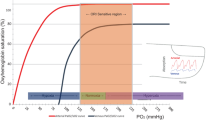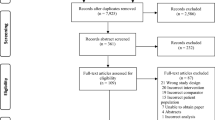Abstract
Since the discovery of anesthetic agents, patient monitoring has been considered one of the core responsibilities of the anesthesiologist. As depicted in Robert Hinckley’s famous painting, The First Operation with Ether, one observes William Thomas Green Morton carefully watching over his patient. Since its founding in 1905, ‘Vigilance’ has been the motto of the American Society of Anesthesiologists (ASA). Over a hundred years have passed, and one would think we would be clear regarding what we are watching for and how we should be watching. On the contrary, the introduction of new technology and outcome research is requiring us to re-examine our fundamental assumptions regarding what is and what is not important in the care of the patient. A vast majority of anesthesiologists would refuse to proceed with an anesthetic without the presence of a pulse oximeter. On the other hand, outcome studies have failed to demonstrate an improvement in patient care with their use. For that matter, it can be argued that outcome studies have yet to demonstrate an unambiguous role for any monitor of any type (i.e. blood pressure cuff or ECG), as outcome studies may fail to capture rare events. Because of the increased safety that has been attributed to pulse oximetry, it is unlikely that further studies can or will be conducted. As we enter a new era of clinical monitoring, with an emphasis on noninvasive cardiovascular monitoring, it might be of benefit to examine the role of the pulse oximeter in clinical care. This article reviews the available evidence for pulse oximetry. Further, it discusses contemporary issues, events, and perceptions that may help to explain how and why pulse oximetry may have been adopted as a standard of care despite the lack of supportive. Lastly, it discusses less obvious benefits of pulse oximetry that may have further implications on the future of anesthesia care and perhaps even automated anesthesia.
Similar content being viewed by others
References
Mannheimer P. The light-tissue interaction of pulse oximetry. Anesth Analg. 2007;105(6):S10–7.
Aoyagi T. Pulse oximetry: its invention, theory, and future. J Anesth. 2003;17(4):259–66.
Barash P, et al. Clin Anesth. 6th ed. Philadelphia: Lippincott, Williams, and Wilkins; 2009.
Wukitsch MW. Pulse oximetry: historical review and Ohmeda functional analysis. Int J Clin Monit Comput. 1987;4:161–6.
Merry A. Role of anesthesiologists in WHO safe surgery programs. Int Anesthesiol Clin. 2010;48(2):137–50.
Thoms G, McHugh GA, O’Sullivan E. The global oximetry initiative. Anaesthesia. 2007;62(s1):75–7.
Tinker J, et al. Role of monitoring devices in prevention of anesthetic mishaps: a closed claims analysis. Anesthesiology. 1989;71:541–6.
Eichhorn J. Prevention of intraoperative anesthesia accidents and related severe injury through safety monitoring. Anesthesiology. 1989;70(4):572–7.
Cullen D, et al. Effect of pulse oximetry, age, and ASA physical status on the frequency of patients admitted unexpectedly to a postoperative intensive care unit and the severity of their anesthesia-related complications. Anesth Analg. 1992;74(2):181–8.
Jurban A. Pulse oximetry. Crit Care. 1999;3(2):R11–7.
Raemer D, et al. Hypoxemia during ambulatory gynecologic surgery as evaluated by the pulse oximeter. J Clin Monit. 1987;3(4):244–8.
Caplan R, et al. Unexpected cardiac arrest during spinal anesthesia: a closed claims analysis of predisposing factors. Anesthesiology. 1988;68:5–11.
Pedersen T, Moller A, Pedersen B. Pulse oximetry for perioperative monitoring: systemic review of randomized, controlled trials. Anesth Analg. 2003;96(2):426–31.
Pedersen T, Hovhannisyan K, Moller A. Pulse oximetry for perioperative monitoring. Cochrane Database of Systematic Reviews 2009, 2009(4).
Moller JT, Jensen PF, Johannessen NW, Espersen K. Hypoxaemia is reduced by pulse oximetry monitoring in the operating theatre and in the recovery room. Br J Anaesth. 1992;68(2):146–150.
Moller J, et al. Randomized evaluation of pulse oximetry in 20,802 patients: II. Perioperative events and postoperative complications. Anesthesiology. 1993;78(3):445–53.
Moller J, et al. Randomized evaluation of pulse oximetry in 20,802 patients: I. Design, demography, pulse oximetry failure rate, and overall complication rate. Anesthesiology. 1993;78(3):445–53.
Bierman M, Stein K, Snyder J. Pulse oximetry in the postoperative care of cardiac surgical patients. A randomized controlled trial. Chest. 1992;102(5):1367–70.
Ochroch E, et al. The impact of continuous pulse oximetry monitoring on intensive care unit admissions from a postsurgical care floor. Anesth Analg. 2006;102(3):868–75.
Moller J, et al. Perioperative monitoring with pulse oximetry and late postoperative cognitive dysfunction. Br J Anaesth. 1993;71(3):340–7.
Cooper J, et al. Effects of information feedback and pulse oximetry on the incidence of anesthesia complications. Anesthesiology. 1987;67(5):686–94.
Pierce E. ASA monitoring guidelines: their origin and development. ASA Newsletter 2002;66(9):22–23.
Islam S, Auerbach A. The impact of intraoperative monitoring on patient safety. In: Markowitz A, editor. Making health care safer: a critical analysis of patient safety practices. Rockville: Agency for Healthcare Research and Quality US Department of Health and Human Services; 2001. p. 265–70.
Pierce E. The 34th Rovenstine Lecture: 40 years beind the mask: safety revisited. Anesthesiology. 1996;84(4):965–75.
Smith G, Pell J. Parachute use to prevent death and major trauma related to gravitational challenge: systematic review of randomised controlled trials. Br Med J. 2003;327:1459–61.
Keats A. The Rovenstine Lecture, 1983: cardiovascular anesthesia: perceptions and perspectives. Anesthesiology. 1984;60(5):467–74.
Joseph V, Lagasse R. Monitoring and analysis of outcome studies. Int Anesthesiol Clin. 2004;42(2):113–30.
Cohen M, et al. A survey of 112,000 anaesthetics at one teaching hospital. Can J Anesth. 1986;33(1):22–31.
Petterson M, Begnoche V, Graybeal J. The effect of motion on pulse oximetry and its clinical significance. Anesth Analg. 2007;105(6):s78–84.
Kay J, Neal M. Effect of automatic blood pressure devices on vigilance of anesthesia residents. J Clin Monit Comput. 1986;2(3):148–50.
Guan Z, Baker K, Sandberg W. Misalignment of disposable pulse oximeter probes results in false saturation readings that influence anesthetic management. Anesth Analg. 2009;109(5):1530–3.
Agashe G, Coakley J, Mannheimer P. Forehead pulse oximetry: headband use helps alleviate false low readings likely related to venous pulsation artifact. Anesthesiology. 2006;105(6):1075–7.
Shelley K, et al. The effect of venous pulsation on the forehead pulse oximeter wave form as a possible source of error in SpO2 calculation. Anesth Analg. 2005;100:743–7.
Feiner J, Severinghaus J, Bickler P. Dark skin decreases the accuracy of pulse oximeters at low oxygen saturation: the effects of oximeter probe type and gender. Anesth Analg. 2007;165(65):S18–23.
Reuss J, Siker D. The pulse in reflectance pulse oximetry: modeling and experimental studies. J Clin Monit Comput. 2004;18(4):289–99.
Fu E, et al. Supplemental oxygen impairs detection of hypoventilation by pulse oximetry. Chest. 2004;126(5):1552–8.
Tremper K. Pulse oximetry’s final frontier. Crit Care Med. 2000;28(5):1684–5.
Silber J, et al. Anesthesiologist direction and patient outcomes. Anesthesiology. 2000;93(1):152–63.
Heringlake M, et al. Preoperative cerebral oxygen saturation and clinical outcomes in cardiac surgery. Anesthesiology. 2011;114(1):58–69.
Shelley K. Is the automation of anesthesia possible or even desirable? Curr Opin in Anaesthesiol. 2008;21:748–9.
Hemmerling T. Automated anesthesia. Curr Opin Anaesthesiol. 2009;22:757–63.
Conflict of interest
None.
Author information
Authors and Affiliations
Corresponding author
Rights and permissions
About this article
Cite this article
Shah, A., Shelley, K.H. Is pulse oximetry an essential tool or just another distraction? The role of the pulse oximeter in modern anesthesia care. J Clin Monit Comput 27, 235–242 (2013). https://doi.org/10.1007/s10877-013-9428-7
Received:
Accepted:
Published:
Issue Date:
DOI: https://doi.org/10.1007/s10877-013-9428-7




